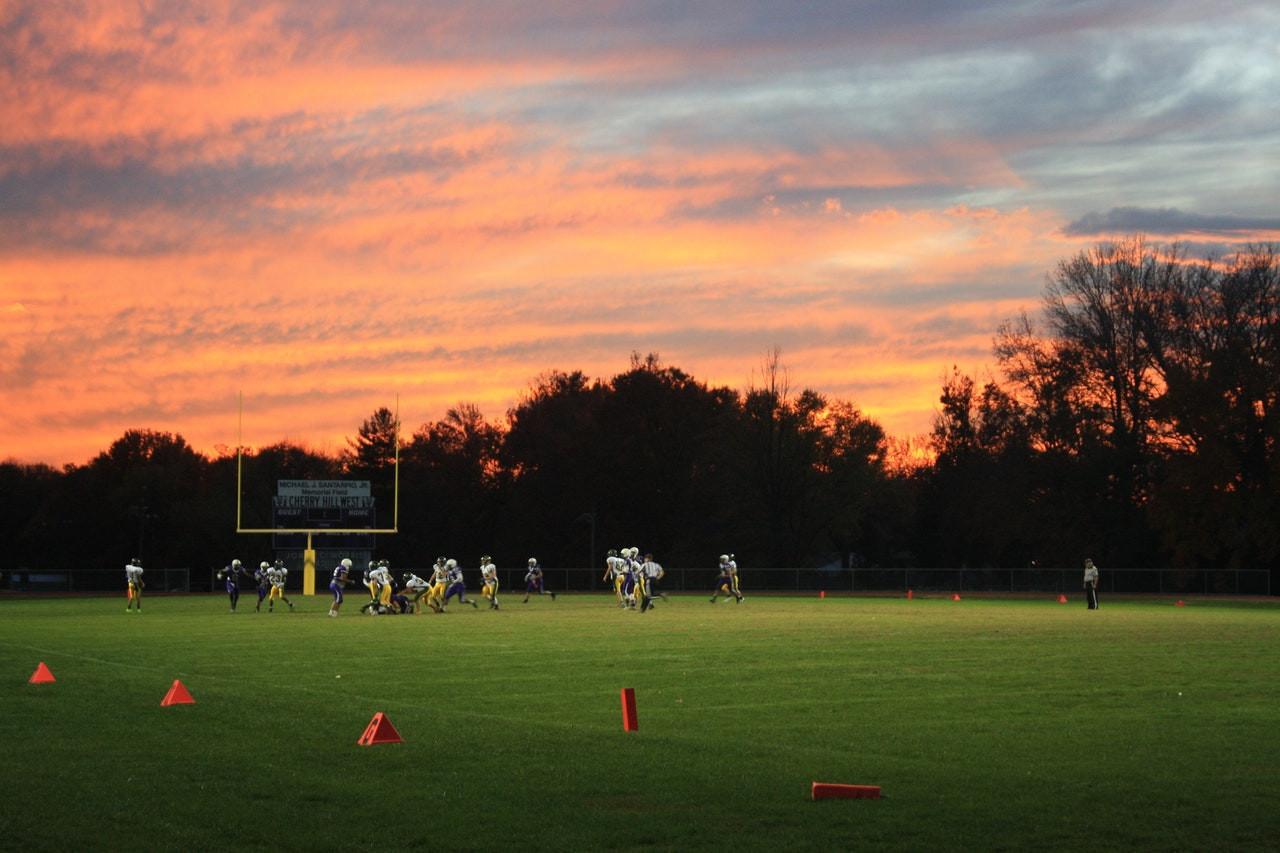To a soccer fan, rugby, American football, and Australian Rules football might not seem that much different one from another. However, even the egg-shaped ball is not of the same size and weight, so we are definitely talking about three very different sports. Even one look at the gear players wear, from the sleeveless jerseys worn in AFL to warrior-like uniforms of NFL players, speaks volumes of how aggressive and pleasant to the eye each sport is. The list of unique traits for rugby, NFL and AFL is endless but it can be best summarized in these 5 categories that are the top differences.
The shape and the size of the fieldWhen comparing these three sports, size does matter. The smallest field is used in NFL and it is 110 meters long and 49 meters wide, while a standard rugby field is somewhat shorter but wider by 10 meters on both sides. The AFL playing field is the most interesting one because it does not have one standard dimension, so its length can vary from 130 to 185 meters, and its width can be anywhere between 110 and 155 meters.
In term of shape, the AFL field is once again odd because it doesn't follow a rectangular pattern like other popular sports. It is actually oval in shape because its origins are related to the rich history of cricket in Australia. Even to this day, mixed AFL/cricket sports complexes are not uncommon.
The ball and the goal postsAlthough the ball might seem as the only thing in common for all three sports, it is actually quite different. All three balls follow the same general shape pattern but the rugby ball is the heaviest. The NFL ball is a bit longer and has seams on one side to ease throwing. The AFL ball is a bit more rounded at the edges than an NFL football, and like the ball for rugby, it is more colorful than the ball used for American football. The ball is not the only thing that seems the same but is not. Uprights in all three sports seem identical but they are worlds apart. Rugby and NFL have similar goal posts including a lowered crossbar but AFL has not got two but four posts.
Different lighting levelsAnother detail that drives apart these three sports apart is the difference in lighting levels. Like with other sports, there are three categories in general. In AFL these are state leagues, regional and local competitions, and finally, practice level of lighting. For instance, during a night game of AFL the necessary level is 200 lux, while a regular training season may use as little as 50 lux. The figures for rugby are roughly (pun intended) the same, while an NFL game requires up to 500 lux, while the minimum for a training session is 75 lux. These figures might seem high, but in reality, sports field LED lights allow for a larger save in energy. They also involve less maintenance than standard floodlights, so the groundsman doesn't get a headache when the utility bills arrive.
ScoringScoring in AFL is possible only by kicking the ball between the outer posts which is called a "behind" worth 1 point. If the ball flies between the inner posts, that's a proper goal worth 6 points. In NFL, a touchdown, achieve either by passing or rushing, is also worth 6 points but it can be converted into 2 extra points by another play or into 1 extra point earned by means of a field goal. A similar point system is at play in rugby but with different terminology. A "try" will get you 5 points for entering the goal area, and a "conversion" will add 2 more points on the scoreboard for the team that makes it.
The number of players and game lengthBecause NFL resembles soccer when it comes to the size of the field it has the exact same number of players as Europe's favorite sport: 11. As the size of the pitch increases, so does the number of players, so a rugby squad has 15 players on the field, while in AFL 18 players are allowed in game per team. That is why only three subs per games are allowed, four less than in rugby. In NFL, substations are frequent because the rulebook does not state a maximum, so they are pretty much unlimited.
Both NFL and AFL are played for four quarters, the only difference being their respective length: 15 minutes in American football and 20 minutes in Aussie football. In rugby, there are only two halves, each lasting 40 minutes. Of course, there is stoppage time and overtime, so a typical game of NFL, for instance, lasts two to three hours.
There are many other rules that we have failed to mention but the 5 rules stated here are the most important. Without them, it would be hard to differentiate between rugby, NFL and Australian Football.
